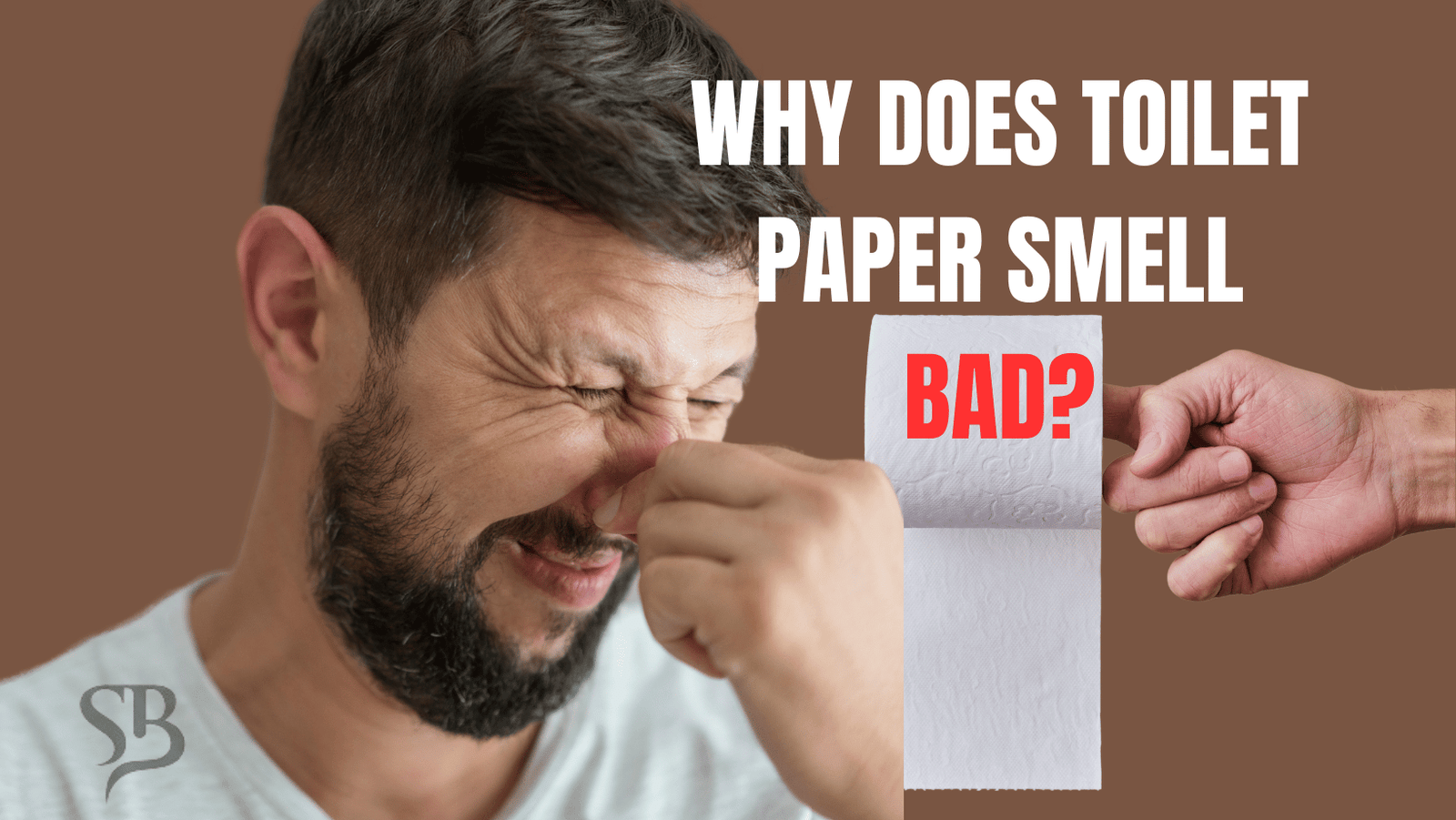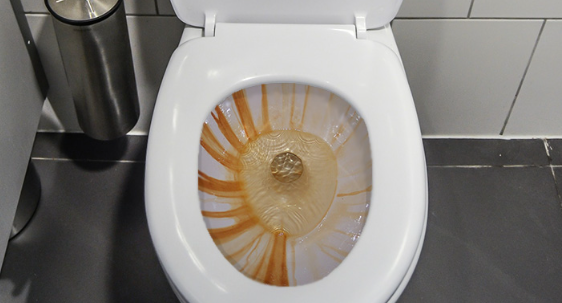Welcome to the mysterious and sometimes stinky world of toilet paper odor! You might be wondering how something as mundane as toilet paper can emit an unpleasant smell, but fear not – I’m here to unravel this curious enigma.
As someone who values personal hygiene and appreciates a pleasant bathroom experience, I’ve been determined to understand the science behind this peculiar phenomenon.
But why does toilet paper smell bad?
Toilet paper can sometimes emit a bad smell if it has absorbed odors from its environment or if it is of poor quality.
Toilet paper in bathrooms can pick up odors from moisture, bacteria, or other substances present in the vicinity, leading to an unpleasant scent.
Additionally, lower-quality toilet paper may contain recycled materials that have residual odors from previous use.
To avoid this issue, choose higher-quality toilet paper, store it in a dry and clean environment, and ensure proper ventilation in the bathroom to minimize any potential odors.
Also read: Where to put toilet paper holder in small bathroom
The Science Behind Toilet Paper Odor:
Toilet paper might seem like a simple product, but its composition is more complex than meets the eye. Typically made from wood pulp or recycled paper, it consists of cellulose fibers that provide the familiar soft and absorbent texture.
However, to enhance various properties, manufacturers may incorporate additives and chemicals that can contribute to the unpleasant smell.
Composition of Toilet Paper:
The primary materials used in manufacturing toilet paper are wood pulp and recycled paper fibers. Wood pulp is processed from trees, while recycled paper comes from previously used paper products.
These materials are subjected to various treatments to create the final product. However, during these processes, certain chemical residues may remain, potentially impacting the odor.

Potential Additives and Chemicals Affecting the Odor:
Additives, such as fragrances and bleaching agents, can be incorporated during the manufacturing process to improve the appearance, texture, and smell of the toilet paper.
While these additives might seem innocent, they can interact with waste and create a strange and sometimes unpleasant aroma.
Microbial Activity:
Believe it or not, the source of the bad odor lies in tiny microorganisms that call toilet paper home.
Bacteria and enzymes thrive on the paper’s surface when exposed to moisture from various sources, including your hands, bathroom air, or even the occasional droplets from the toilet bowl.
These microbes feast on organic matter present on the paper, breaking it down into simpler compounds, which leads to the release of volatile and malodorous gases.
Factors Promoting Microbial Growth on Toilet Paper:
To encourage microbial activity, several factors come into play:
- Humidity: Bathrooms are typically humid environments, especially after a hot shower. This moisture can be absorbed by the toilet paper, providing an ideal breeding ground for bacteria and fungi.
- Temperature: Warm temperatures can expedite microbial growth, allowing bacteria and enzymes to proliferate more rapidly, intensifying the smell.
Other Sources of Bad Odor in Toilet Paper
Now that we know how microbial activity contributes to the smell let’s explore the two main sources of bad odor related to toilet paper.
Contact with Body Waste:
When using toilet paper to clean yourself after using the bathroom, it inevitably comes into contact with urine and feces. While it serves its primary purpose of removing waste, the interaction with bodily fluids initiates a series of biochemical reactions.
Bacteria and enzymes present in urine and feces interact with the cellulose fibers in the paper, leading to the release of those smelly compounds.
How Bacteria and Enzymes Interact with Waste and Affect the Smell:
The interaction between toilet paper and waste is a fascinating chemical dance.
Bacteria and enzymes work to break down the organic matter present in urine and feces, producing volatile sulfur compounds, amines, and other malodorous gases.
These gases mix with the already present odors from the toilet paper itself or any synthetic fragrances added during the manufacturing process, resulting in a potent, nose-wrinkling smell.

Storage and Environmental Factors:
The environment in which your toilet paper is stored can significantly impact its odor.
If stored in a damp or warm place, such as a humid bathroom, the paper becomes more susceptible to microbial growth. Ensuring proper storage conditions can help mitigate this issue.
Impact of Storage Conditions on Toilet Paper Odor:
- Humidity: If toilet paper is stored in a humid bathroom, moisture can be absorbed into the fibers, promoting microbial growth and odor.
- Temperature: Warm temperatures can accelerate the activity of bacteria and enzymes, causing them to release more smelly gases.
Common Chemicals and Additives:
Now, let’s take a closer look at the common chemicals and additives found in some toilet papers and their potential contribution to the bad smell.
Fragrances and Deodorizers:
You’ve probably encountered scented toilet paper with promises of a fresh and clean fragrance. These scents are added to mask any undesirable odors that may arise during use.
However, these added fragrances can sometimes react with waste products or the toilet paper itself, creating a blend of smells that might not be as pleasant as expected.
The Potential Risk of Synthetic Deodorizers:
Unfortunately, some individuals may have sensitivities or allergies to synthetic fragrances.
Exposure to these chemicals through scented toilet paper could lead to discomfort, skin irritations, or even respiratory issues in more severe cases.
If you’re prone to allergies or sensitive skin, it’s best to opt for fragrance-free or lightly-scented toilet paper to avoid any potential problems.

Bleaching Agents:
The bright white appearance of many toilet papers is achieved through the use of bleaching agents during the manufacturing process. Although these agents contribute to the appealing look of the product, they can also interact with the waste and microbial byproducts, leading to additional odors.
Types of Bleaching Agents Used in Toilet Paper Production:
There are various types of bleaching agents, including chlorine, oxygen, and hydrogen peroxide-based agents.
While they are considered safe for general use, they may react with organic matter and produce volatile compounds responsible for the bad smell.
Health Implications of Foul-Smelling Toilet Paper:
Beyond the annoyance of the odor, foul-smelling toilet paper may have some health implications to consider.
Allergies and Sensitivities:
As mentioned earlier, some people may be more sensitive to the chemicals and fragrances present in certain types of toilet paper.
Exposure to these allergens can lead to skin irritations, rashes, or respiratory discomfort. It’s essential to choose toilet paper that aligns with your body’s needs and avoids potential irritants.
Prevalence of Sensitivities to Certain Chemicals in Toilet Paper:
Allergies and sensitivities can vary from person to person. Some may experience no adverse effects from scented or bleached toilet paper, while others may find it uncomfortable or even harmful. If you suspect you have sensitivities to certain chemicals, consider switching to more natural and hypoallergenic options.
Impact on Indoor Air Quality:
If you’ve ever closed the bathroom door after using the toilet, you know how quickly the air quality can change. The combination of bad-smelling toilet paper and waste products can negatively impact the indoor air quality, potentially leading to respiratory issues or general discomfort.
Also read: Septic Safe Toilet Paper – The Ultimate Buying Guide
Negative Effects of Bad-Smelling Toilet Paper on Indoor Environments:
Unpleasant Odor: Obviously, bad-smelling toilet paper contributes to an overall unpleasant and uninviting bathroom atmosphere.
Volatile Organic Compounds (VOCs): The malodorous gases released by microbial activity or chemical interactions can be considered volatile organic compounds. Inhaling these compounds can cause respiratory irritation, particularly for individuals with asthma or allergies.

Tips to Prevent Toilet Paper Odor:
Now that we’ve uncovered the science and sources behind toilet paper odor, it’s time to take action! Let’s explore some practical tips to prevent this problem and maintain a fresh-smelling bathroom experience.
Choosing the Right Toilet Paper:
When shopping for toilet paper, opt for natural and unbleached varieties whenever possible. Unbleached toilet paper is less likely to interact with waste and produce foul odors.
Additionally, avoid heavily scented options and opt for fragrance-free or lightly-scented products if you prefer a pleasant smell. Keep an eye out for eco-friendly certifications that ensure the toilet paper is produced using sustainable practices.
Also Read: Do Amish Use Toilet Paper?
Proper Storage and Handling:
Ensuring proper storage conditions for your toilet paper can significantly reduce the chances of bad odors.
- Keep It Dry: Store your toilet paper in a dry location, away from moisture sources. If your bathroom tends to be humid, consider using airtight containers or storage solutions to protect the paper from environmental factors.
- Keep It Cool: Avoid placing toilet paper near heat sources or in direct sunlight, as warmth can expedite microbial activity and compound the odor issue.
Hygienic Practices:
Maintaining a clean and hygienic bathroom environment is essential to prevent the proliferation of odor-causing bacteria.
- Regular Cleaning: Clean your bathroom regularly, paying particular attention to toilet surfaces, handles, and surrounding areas. Keeping the bathroom clean will minimize the spread of microbes and the potential for bad smells.
- Proper Waste Disposal: Ensure waste, especially used toilet paper, is correctly disposed of in a covered bin or flushed away promptly. Avoid leaving used toilet paper exposed, as it can contribute to the spread of unwanted odors.
Eco-Friendly Alternatives to Traditional Toilet Paper:
If you’re seeking environmentally friendly alternatives to traditional toilet paper that also help control odor, consider these options:
Bidets and Water Sprayers:
Bidets and water sprayers provide an innovative and effective way to cleanse after using the toilet.
Instead of relying solely on toilet paper, these devices use water to wash away waste, minimizing the need for excessive wiping and reducing the potential for odor.
They are also gentler on the skin, making them an excellent option for individuals with sensitivities or those seeking a more hygienic bathroom experience.
Advantages of Bidets and Water Sprayers in Terms of Cleanliness and Odor Control:
- Improved Cleanliness: The use of water helps achieve a more thorough cleansing, reducing the chances of residue and odor-causing bacteria.
- Reduced Waste: By using water for cleansing, you’ll significantly reduce the amount of toilet paper consumed, contributing to a more sustainable lifestyle.
Environmentally-Friendly Toilet Paper Options:
If you prefer to stick with traditional toilet paper, you can still make eco-conscious choices.
- Recycled Toilet Paper: Opt for toilet paper made from recycled materials. Recycled paper has undergone a previous life cycle and usually contains fewer chemicals and additives than its non-recycled counterparts.
- Sustainable Materials and Certifications: Look for toilet paper with certifications such as the Forest Stewardship Council (FSC) or the Programme for the Endorsement of Forest Certification (PEFC). These certifications indicate that the paper comes from responsibly managed forests, promoting sustainability and reducing the impact on the environment.
Conclusion:
We’ve embarked on an illuminating journey to uncover the mysteries of toilet paper odor and its fascinating science.
From the interaction between body waste and microbial activity to the impact of additives and storage conditions, we now understand why toilet paper can sometimes emit a less-than-pleasant smell.
Armed with this knowledge, we can make informed choices to create a fresher and more delightful bathroom experience.
By choosing the right toilet paper, storing it correctly, and adopting hygienic practices, we can minimize the chances of bad odor and promote a cleaner bathroom environment.
Moreover, considering eco-friendly alternatives such as bidets and recycled toilet paper not only benefits our health and well-being but also contributes to a greener, more sustainable world.
So, the next time you venture into the toilet paper aisle, you’ll do so with newfound wisdom, selecting the perfect roll to keep you feeling fresh and your bathroom smelling delightful. Here’s to a hygienic, odor-free, and eco-friendly bathroom experience for all! Happy wiping!







